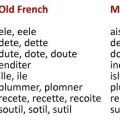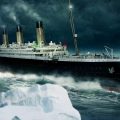Galleons are one of the most iconic and recognizable symbols of the Age of Exploration. They were large, full-rigged sailing ships that were primarily used for warfare, and developed in the 15th and 16th centuries. The name “galleon” comes from “galley”, which was a type of war vessel with a characteristic beaked prow. These ships were used by the Spanish Crown for maritime expeditions in the 16th though 18th centuries, as they provided the only means of communication between Spain and its Philippine colony.
The most famous galleon is probably the São João Baptista (also known as Botafogo), which was built around 1530. This ship was described as ‘the biggest and most powerful warship in the world’ by Portuguese, Castillian and Italian observers at the time. It is believed to have been equipped with 124 cannons, making it a formidable force on the seas.
Today, there is still one galleon in operation – The Galeón Andalucía – which is a replica of a 16th-17th century galleon. During its heyday, Manila became one of the world’s great ports due to its role in trade between China and Europe thanks to these vessels.
Galleons are an important part of maritime history and remain an iconic symbol of exploration and adventure even today.
The Origin of the Name ‘Galleon’
A galleon is a type of full-rigged sailing ship that was developed in the 15th and 16th centuries for use in warfare. The name “galleon” coes from the word “galley,” which had become associated with war vessels due to their characteristic beaked prow. This distinguishing feature was retained on the new galleon ships, which were designed to be larger and more heavily armed than earlier vessels. Galleons were typically used for long-distance voyages, and their sail plan allowed them to maneuver quickly and easily. They were also armed with cannons and other weapons for defense against enemy ships. As a result, galleons became one of the most powerful warships of their time, used by many nations around the world until they were eventually replaced by steam-powered ships in the 19th century.

Source: sldinfo.com
The Fate of Galleons
Unfortunately, there are no original galleons left in the world today. The last original galleon is believed to have sunk in the 19th century. However, a replica of a 16th-17th century galleon called the Galeón Andalucía has been constructed and is the only one in the world that currently sails. The Galeón Andalucía is a faithful reproduction of a 16th-17th century Spanish Crown galleon, boasting traditional features such as three masts with lateen sails, wooden decks, and figureheads on the bow. It was built using traditional methods and materials to be as close to an original ship as possible. It currently sails aound Europe and serves both as an educational tool and a tourist attraction.
The Significance of Galleon in Today’s World
The galleon trade was an incredibly important part of Spain’s relationship with its Philippine colony, allowing the two to communicate and exchange goods efficiently. The Manila-Acapulco galleons served as the main link between Europe and the Far East, carrying goods such as Chinese silks, spices, and porcelain to Spain. This trade route was incredibly profitable for Spain, providing a vital economic lifeline for the Spaniards living in Manila. In addition, it allowed for cultural exchange between China and Europe, introducing new ideas and products to both sides. All of thse factors contributed to making the galleon trade so important and significant in world history.
The Largest Galleon Ever Built
The São João Baptista, commonly known as the Botafogo, was the largest galleon ever built. Constructed in the early 16th century, arond 1530, it was a remarkable technological achievement for its time. With a length of over 200 ft (60 m) and a displacement of 1,200 tons, the Botafogo was one of the most powerful warships in its day. It had three masts and was equipped with 44 cannons and artillery pieces, making it more heavily armed than any other vessel in its class. In addition to its size and firepower, it also possessed superior maneuverability due to its innovative hull design. The ship could outrun any enemy vessel that crossed its path and thus earned itself a formidable reputation among Europeans of the period. Its size and power made it an integral part of Portugal’s naval fleet during the Age of Exploration, allowing Portugal to extend their reach across oceans and establish colonies around the world.
The Mayflower: Was it a Galleon?
Yes, the Mayflower was a galleon. It was a type of ship used by the British in the 16th century and was typically around 100-110 feet long. It weighed approximately 200 tons and could carry up to 102 passengers or crew members. The Mayflower was constructed around 1584, and it is most famously known for transporting the Pilgrims to North America in 1620. The galleon had three masts with square sails and two decks, giving it good stability and speed on the open sea. It also had several cannons on board to defend itself against pirates or other ships.
Is the Black Pearl a Galleon?
Yes, the Black Pearl is a galleon. It was originally an East Indiaman, which is a type of sailing ship used for trade between the Indian Ocean and Europe in the 17th and 18th centuries. The Black Pearl has a length of 165 feet (50.292 meters) and is equipped with 32 twelve-pound cannons, making it an impressive and formidable vessel.
The Abolition of Galleon Trade
Galleon trade was abolished in 1815 as a result of the Spanish King issuing an imperial edict to end it. This was due to a number of factors, including the impact of independent movements in Latin America and free trade in Britain and America.
In Latin America, the movement for independence from Spain had gained momentum and was beginning to challenge the traditional colonial system. The Spanish King feared that galleon trade would only strengthen thee movements by helping them access resources outside of Spain’s control.
At the same time, Britain and America were entering into a period of free trade. This meant that goods could be traded more freely than before, leading to a decrease in demand for Spanish products such as those brought by galleons. By ending galleon trade, the Spanish King hoped to protect his own interests and ensure that his country remained competitive in international markets.
Overall, then, galleon trade was abolished due to its perceived threat to Spanish interests both domestically and internationally. Its impact on Latin American independence movements and free trade policies in Britain and America were also decisive factors in its eventual banishment from international waters.
Comparing the Size of a Frigate to a Galleon
No, a frigate is not bigger than a galleon. A frigate is a 6-cannon, 2-mast sailing vessel that is typically 2 times larger than the sloop but smaller than the galleon. The maximum number of people it can hold is three. Galleons, on the other hand, have up to 4 masts and can hold as many as 10 cannons, making them much larger and more powerful than frigates.
The Number of Unrecovered Spanish Galleons
At present, there are approximately 515 Spanish galleons still missing from the inventory of shipwrecks compiled by the Spanish culture ministry. Of the 681 vessels identified between 1492 and 1898, archaeological teams have located the remains of fewer than a quarter, leaving a significant number of galleons unaccounted for. It is estimated that between 50-60% of these missing vessels were Spanish galleons. As a result, it is likely that anywhere from 283 to 324 Spanish galleons remain undiscovered.
Number of Guns on a Galleon
A typical galleon from the Spanish Armada carried anywhere from 30-50 guns, depending on its size. The smallest 700-850 toneladas galleons would have around 30-40 guns, while the largest 1,000-toneladas ones could carry up to 50 guns. These guns were typically divided between canones (large cannons), culebrinas (medium-sized cannons), and other smaller guns such as muskets and arquebuses.
Conclusion
In conclusion, galleons were a type of full-rigged sailing ship that was built primarily for war during the 15th and 16th centuries. They were used by the Spanish Crown for maritime expeditions, and served as an economic lifeline for the Spaniards in Manila. The most famous galleon was the São João Baptista (Botafogo), which was considered to be the biggest and most powerful warship in the world at that time. Today, thee is only one replica of a 16th-17th century galleon that still sails, known as the Galeón Andalucía. Galleons have since become an iconic part of maritime history, symbolizing a time when these impressive ships revolutionized trade routes around the world.












